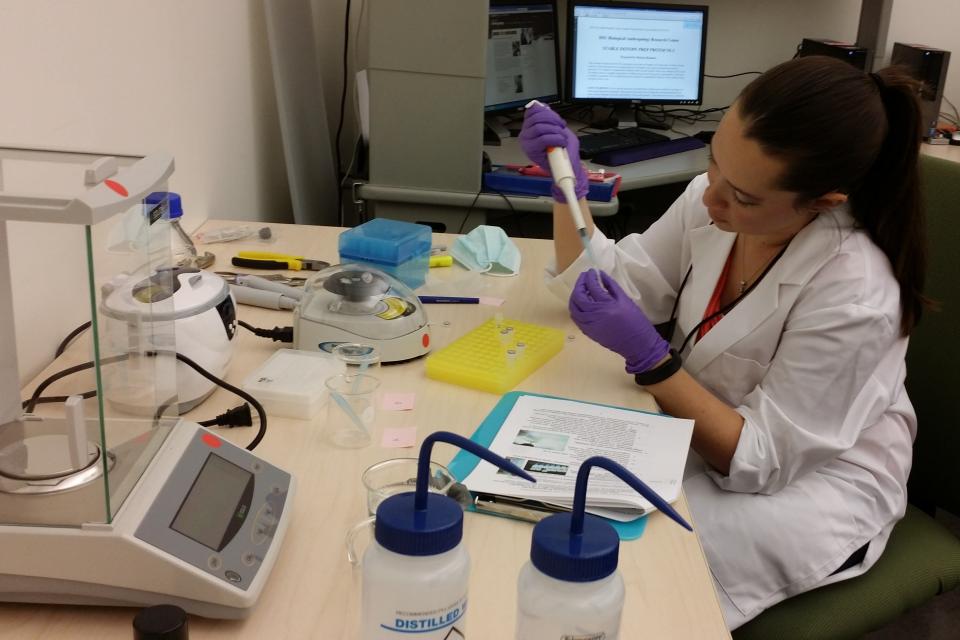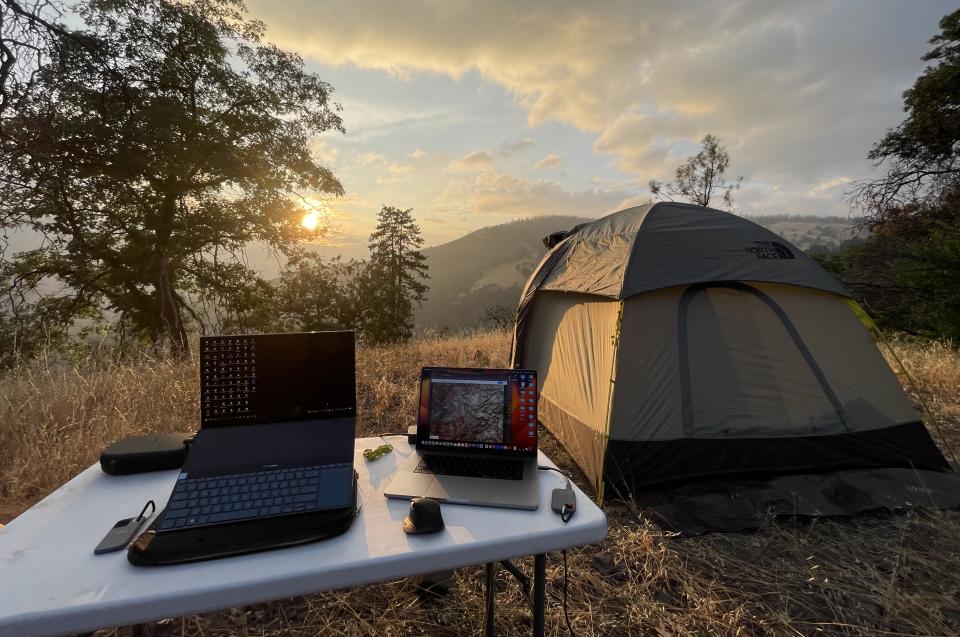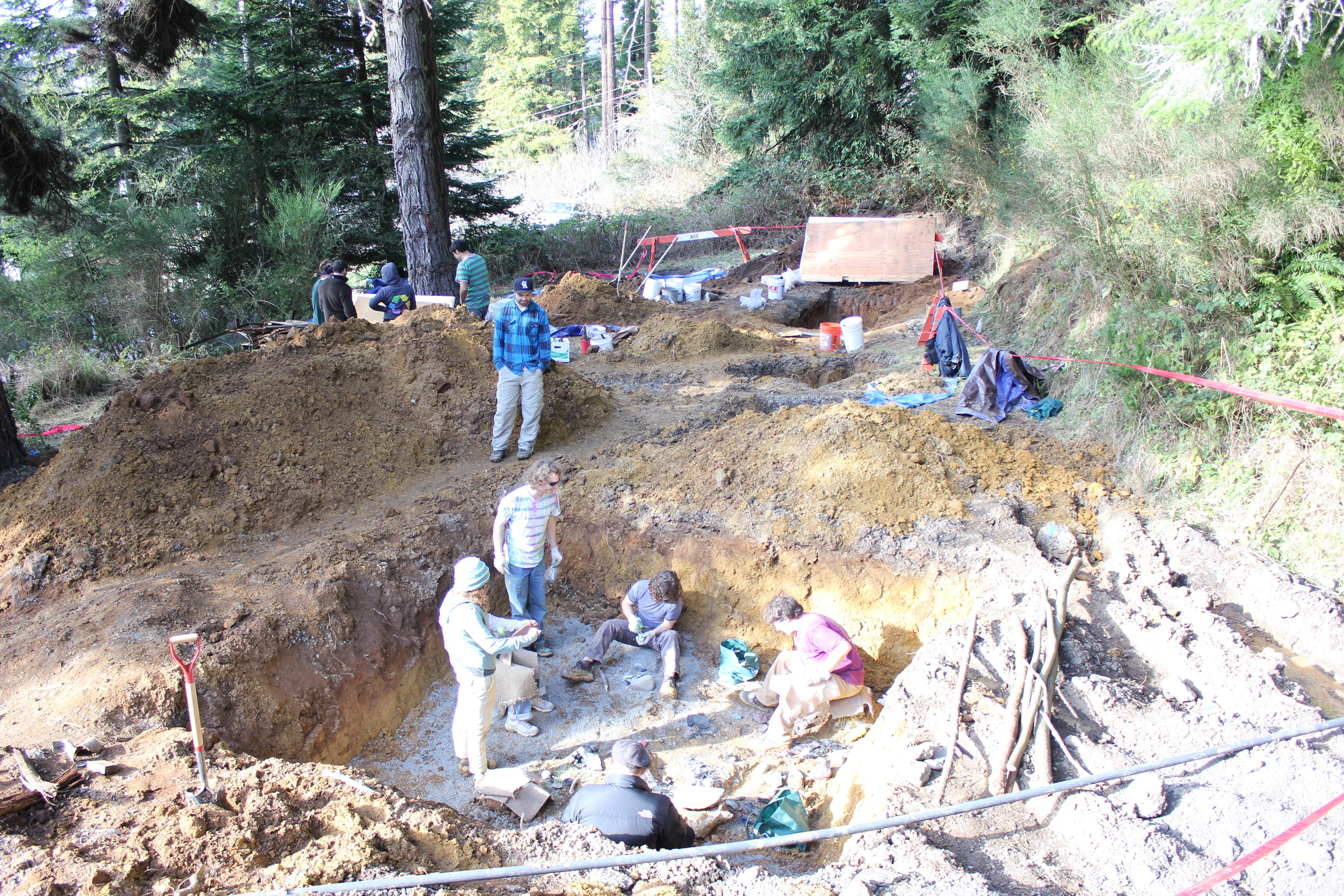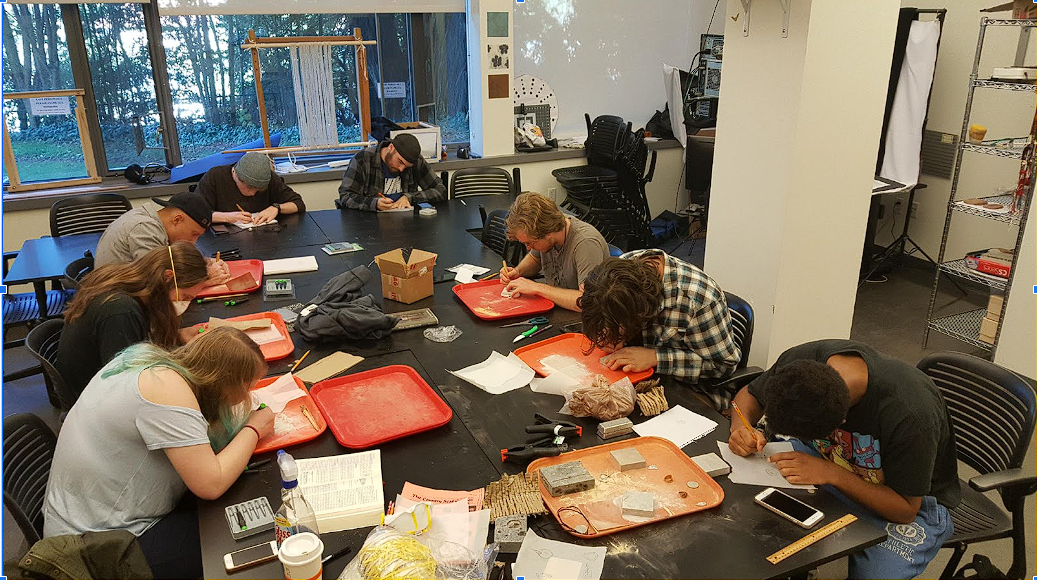Anthropology Facilities & Collections
The Anthropology Department is located in the Behavioral and Social Sciences (BSS) Building. Facilities include state of the art lecture halls, ‘smart’ media classrooms, and custom laboratories. The Anthropology Teaching Lab (BSS 310) is a dedicated space for advanced courses in all of the anthropological subdisciplines, and it has a view of the bay! The Anthropology Department has multiple labs and facilities across the subfields - you can find the archaeology and biological anthropology labs and collections room on the first floor, the ethnographic research lab on the second floor, and the department office and most faculty offices on the fifth floor.

Geospatial Archaeology Research Lab
The Geospatial Archaeology Research Lab (Arch Lab) is a research facility dedicated to the scholarly pursuit of knowledge about past cultures within California, nearby, and international areas. As part of the Anthropology Program of Cal Poly Humboldt, the laboratory supports the archaeological research and instructional activities of the faculty. The laboratory provides unique learning and directed-research opportunities for Humboldt students, as well as educational outreach programs within the local community.

Biological Anthropology Research Lab
The Biological Anthropology Research Lab (Bioanth Lab) provides training and research opportunities in evolutionary and applied biological anthropology and bioarchaeology. At the lab, student research assistants learn methods by working both independently (as project leads and in groups) and with faculty and other researchers. Students and staff are dedicated to outreach and collaboration - we work with students and faculty from other departments and institutions as well as consult on forensics cases to assist local agencies.

Ethnographic Research Laboratory
The Ethnographic Research Laboratory is a research facility dedicated to the scholarly pursuit of knowledge about human cultures. As part of the Anthropology Program of Cal Poly Humboldt, the laboratory supports the research and instructional activities of the faculty, unique learning and directed-research opportunities for students and educational outreach within the local community.

Cultural Resources Facility
The Cultural Resources Facility (CRF) offers students hands-on training opportunities in cultural resources management and heritage preservation, which are major career areas in applied archaeology. Students work with professional archaeologists, architectural historians, and other specialists, while receiving training project inventory, site mapping, excavation, historical research, identification and management of cultural resources, and navigating federal, state, and local historic preservation laws and regulations.

Simulated Archaeological Site
The Simulated archaeological site (SIM site) is an on-campus mock archaeological site. At the SIM site, students practice archaeological methods such as surveying, mapping, and excavation. Students also participate in creating and burying artifacts and features for later excavation. The site is also used for various experimental projects.

Experimental Archaeology Lab
The Experimental Archaeology Lab is a space that facilitates student and faculty projects and courses that involve recreating artifacts (portable human made/modified materials) and features (non-portable things like hearths and buildings) from the past. The goal is to better understand the artifacts and features and the cultures that made them.

3D Virtual Lab
The 3D Virtual Lab is a space dedicated to 3D and virtual work in anthropology and related fields. The lab features a 3D scanner, a photo booth, photography equipment, a microscribe, two 3D printers, a large format printer, and various related software. Lab resources are integrated into Anthropology courses and are also available to students and faculty in other departments.
Anthropology Collections Facility
The Anthropology Collections Facility (CRF) houses a variety of collections that are used for teaching and training students.
Collections include items such as replicas (copies such as casts) of fossil hominin bones (australopithecines, Neanderthals, etc…); replicas of human and nonhuman skeletal materials used to train students in fields such as evolutionary anatomy, zooarchaeology, and biological anthropology.
We also have replicas of archaeological artifacts, some of which have been produced by faculty and students doing experimental archaeological studies. The facility also includes research collections.
Students are able to work in the space to gain training in curation and collections management.
